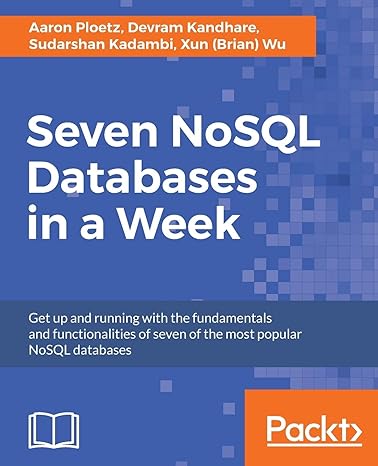Question
Q5. An OS running on a single CPU has the following two processes: P 1 consists of a 70-ms CPU burst followed by an I/O
Q5. An OS running on a single CPU has the following two processes:
P1 consists of a 70-ms CPU burst followed by an I/O request followed by a 30-ms CPU burst
P2 consists of a 40-ms CPU burst followed by an I/O request followed by a 60-ms CPU burst
Draw a complete timing diagram showing how a time-sharing operating system will handle these processes under the following assumptions:
Both I/O requests go to the same device and each request takes 80 ms.
The I/O device will start processing a queued request as soon as the current request is done (no delay).
Whenever P1 and P2 are both ready, the scheduler will give the CPU to the process that did not get the last CPU time (fair alternation if both are ready). In the beginning, the CPU is given to P1.
The time quantum is 50 ms
The kernel time (including initiation of I/O requests, scheduling and context switching) is 10 ms.
The OS starts each I/O request right at the beginning of the kernel time.
Ignore any delay or transition time that was ignored in class. (30 points)
Show both the CPU and the I/O device in your diagram and make sure that you align the CPU time with the I/O time.
Step by Step Solution
There are 3 Steps involved in it
Step: 1

Get Instant Access to Expert-Tailored Solutions
See step-by-step solutions with expert insights and AI powered tools for academic success
Step: 2

Step: 3

Ace Your Homework with AI
Get the answers you need in no time with our AI-driven, step-by-step assistance
Get Started


